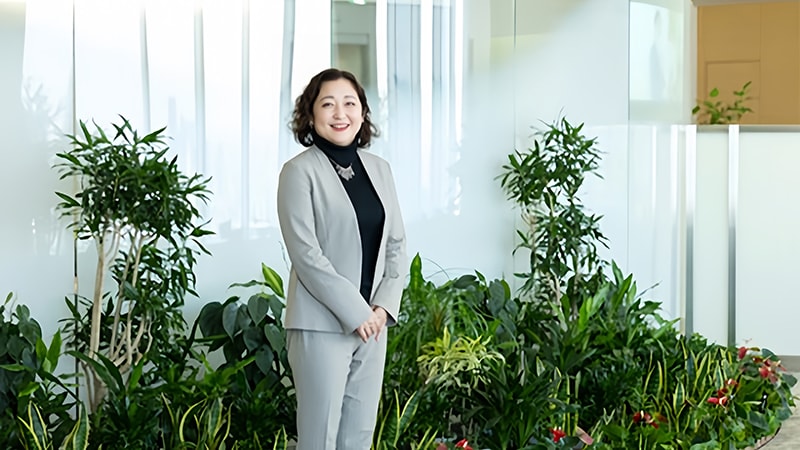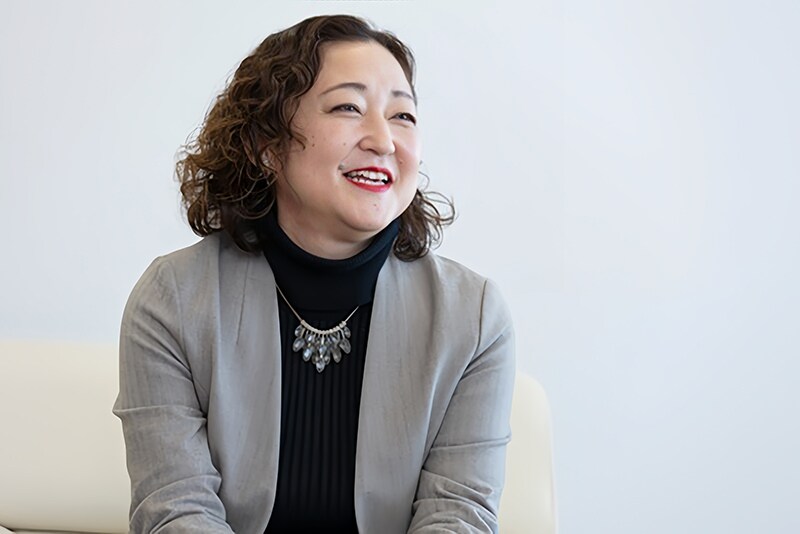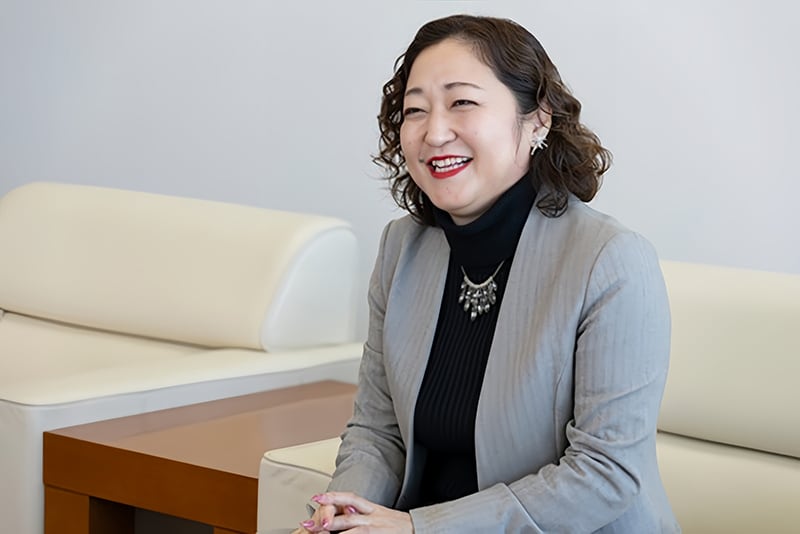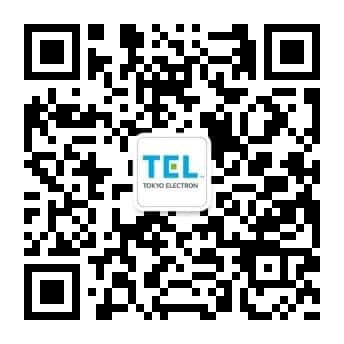Listen to the Changing Pulse of Technology and See the Future
People

A Spirited Career of a TEL Executive Inspired by the Beautiful World of Mathematics
Tokyo Electron (TEL) is the world’s fourth largest semiconductor production equipment manufacturer by revenue. As a leading company supporting the foundation of the digital society, TEL operates from 87 locations in 19 countries and regions. Sumie Segawa joined the company three decades ago as an engineer when there were only about 3,000 employees.
Her career has grown with the company, and she is now an executive in Corporate Innovation at TEL. In the following interview, she shared career steps and the unique dynamics business of the semiconductor markets.
Key topics in this article: - The Semiconductor Revolution and the Beginning of an Engineering Career - I Have Had Difficulties and Disappointments, but the Semiconductor Industry Is My Field - Pursuing Innovative Technology Toward a Sustainable Future
Biography
-
Sumie SegawaVice President & General Manager, Division Officer, Corporate Innovation Division, Tokyo Electron Chair, Member of the Board, TEL Venture Capital
Segawa joined TEL in April 1995 and was assigned to the Central Research Laboratory. She became group leader of the Simulation Group in the Technology Development Center in 2005, Vice President of the Development Strategic Dept. in 2016, Vice President of the Development Strategic Dept. and the Development Planning & Promotion Dept. in 2020, Vice Division General Manager of the Corporate Innovation Division. In 2021, and Vice President & General Manager and Vice Division General Manager of the Corporate Innovation Division in July 2022. She assumed her current position in July 2024.
The Semiconductor Revolution and the Beginning of an Engineering Career
Talking about the semiconductor industry, Sumie Segawa, an executive officer at Tokyo Electron (TEL) and the division officer of the Corporate Innovation Division, says,
“The semiconductor industry is currently my top recommended industry. Autonomous driving, smart homes, smart industries—these are just a few examples of how digital technologies are permeating our society; and semiconductors are at the heart of these changes, evolving at an unprecedented pace. The semiconductor market is expected to double in size to more than $1 trillion by 2030. There is no doubt that it is one of the world’s leading growth industries, and the equipment market holds a similar promise.
“In this industry, individuals and companies that are the first to develop breakthrough technologies are not only highly valued, but can also attempt to replicate their success as many times as they wish. Major innovations in this industry typically occur in a seemingly endless multi-year cycle. I think this is a fascinating place to be for those who love the challenge of building a rewarding future.”
As a student, Segawa was captivated by the beauty of mathematics. She says she belongs to a generation that has felt the benefits of rapidly evolving technologies and has longed for an even more amazing world of technological advances. She devoted herself to plasma research in her undergraduate and master's degree programs before joining TEL, a semiconductor equipment company.
“I was familiar with the company because I was involved in joint research with TEL at the university. I started my career here as an engineer, and have stayed with the company ever since.
“I joined TEL in 1995, the year Windows 95 was released. The late 1990s and early 2000s saw the emergence of a number of modern electronic devices, including PCs, smartphones, and game consoles. The changes in society and the conveniences made possible by semiconductors were quite palpable, and I realized how the technological solutions we create as engineers can transform the world.
“I was also struck by the functional beauty of advanced semiconductors. Sometimes cutting-edge semiconductors were designed specifically for use in game consoles rather than PCs or other applications, which also intrigued me. In fact, this kind of evolution is exactly what led to the advanced GPUs (Graphical Processor Units) used as AI semiconductors today. Interesting, isn’t it?
“Today, semiconductors are a critical part of our society’s infrastructure, much like water and electricity. It is satisfying to work in the semiconductor industry because we support the infrastructure that benefits our society. Because it is a fast-growing industry, there are many opportunities for us to challenge ourselves and develop the technological breakthroughs the world needs. Speaking for myself, it gives me a great deal of satisfaction to work in this industry and for a global leading company, contributing to the development of technologies that will shape a bright future.”
“I Have Had Difficulties and Disappointments, but the Semiconductor Industry Is My Chosen Field”
In the heavily male-dominated semiconductor industry, how did Segawa deal with difficulties in your career, if any?
“I was used to an environment where women were outnumbered by men because I took science courses in high school and college. Still, I felt uncomfortable when I received unwanted attention as a minority or careless remarks that were hurtful. But there were also those who understood and accepted me as an individual, so I chose not to be bothered by some negative experiences and focused on my work.”
While pursuing her career, Segawa had a child and dealt with the changing stages of life.
“I gave birth to and raised a child continuing my job. Unlike my mother, who was a stay-at-home mom, I didn’t get to spend as much time with my child as she did with me, and I was torn between my career and motherhood. So I thought about changing my job to one that would allow me to spend more time with my family. But then I considered what I really wanted to accomplish in life and what I was uniquely capable of doing, and came to the conclusion that the semiconductor industry was my field, and TEL was where I wanted to be.
“When it came to parenting, I prioritized the tasks that required my time and energy and outsourced the rest when I could. I focused on making the most of the little time I had with my child and splurged on a once-a-week housekeeping service. My mother helped out when I was on business trips. Some academic conference venues started offering a nanny service around 2005, so I sometimes took my child with me.”
Segawa was given her first management position as soon as she returned from her parental leave.
“My supervisor valued my planning skills and recommended me for the management position when I returned to work. He said that my lifestyle would change and I would have less time to work, so he suggested I take charge of a team and focus on achieving results together. It was a very positive offer that changed my career.”

As an engineer, however, Segawa says she had some concerns.
“I had always enjoyed creating things as an individual engineer, but I wasn’t sure I could lead a team and get results. But once I started, I experienced the joy of accomplishing things beyond the capacity of any one person, and I enjoyed celebrating a job well done with other members. Management was so exciting! I understood the personalities of the team members and it helped me improve my communication skills. My parenting skills came in handy in some cases.”
Segawa continued to advance her career, but there came a time when she faced major changes in the semiconductor industry that brought her project to a halt.
“At the beginning of my 40s, the research center where I was entrusted with the mission of launching a new business as the head of the Development Planning Department. TEL is a well-established company with a high level of technological confidence, but starting a new business is not so easy. I dedicated myself to the mission alongside my team despite my struggles.
“However, the company’s direction changed, and our plans were frozen. It felt like a vote of no confidence in the work my team and I had poured our souls into, and I was crushed. When I told my manager how I felt, he gave me a new opportunity to map out the future vision of semiconductor technology, a task even more forward-looking than starting a new business.”
How did Segawa manage to reorient herself after this experience?
“I studied in a Management of Technology (MOT) program. Reflecting on my past experiences and looking ahead to my potential role in the company, I realized that the knowledge of business and management would be critical. After consulting with my manager, I enrolled in the Graduate School of Management at Tokyo University of Science. The knowledge of technology management has given me a more comprehensive view of our company and our industry, and has broadened the horizons of my work.”
“Pursuing Innovative Technology Toward a Sustainable Future”
Segawa is currently Vice President & General Manager at TEL, serving as Division Officer of the Corporate Innovation Division. Her team consists of approximately 600 people in Japan and overseas, and she is responsible for a wide variety of tasks ranging from technology marketing to R&D for future innovations. The diversity of her team and the environment in which they work can often create a surprising synergy that she finds very stimulating.
“Our team covers a wide range of technologies, and its members are unique individuals with diverse experience in the semiconductor and other industries. Engineers think and act in unconventional ways by nature, so they are not easy to manage.
“But forcing them to be less stubborn in their work would be suicidal for us as a technology company. When engineers feel confident that their work is on the right track, they will double or even triple their efforts and never give up until they get the results they want. Especially in corporate R&D, where creating innovation is the ultimate mission, we focus heavily on motivating engineers to perform at their best with little interference.”
Today, TEL is working to realize the “Digital & Green” concept, which balances the development of the digitalized society with the preservation of the global environment. Segawa says TEL’s mission is to provide advanced equipment that produces semiconductors with ever-increasing performance and energy efficiency, and also to reduce environmental impact by striving for Net Zero.
“The manufacturing processes we use today have not reached their final stage. We need to develop semiconductor manufacturing technologies that are more environmentally friendly and can produce better semiconductors. Today’s semiconductor manufacturing processes consume huge amounts of water, electricity, and gases. The semiconductor market is expected to double in size by 2030, but the industry consensus is that this growth will not be sustainable if it takes twice as much energy to get there. We need to harness the brainpower of diverse people to address this issue. That is why TEL is recruiting more people from diverse backgrounds.
“In the area of new technologies, such as digital transformation or DX, we have already had a number of people from different backgrounds join us, including one who did sample measurements in the food industry and an ocean color researcher. We already have in place a work environment for data scientists who would be essential to DX. As a long-time world leader in technology, TEL has the financial resources and readiness to invest generously in R&D where needed. If you are interested in and you love a challenge, we would very much like you to be part of our team.”
“An industry where we can pursue our dreams endlessly.” This is how Segawa describes the semiconductor industry.
“The pace of technological innovation in this industry is so fast that we have to keep learning just to keep up. But we also have many opportunities to take on challenges, and we have a level playing field at TEL. That is why all of our employees, regardless of age, are so full of energy and vitality. I, too, will continue to challenge myself for the foreseeable future!”




